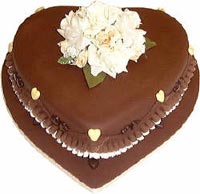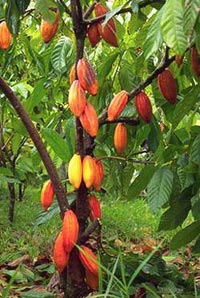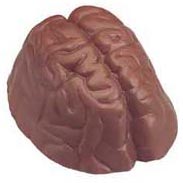| (insert your NIE or newspaper logo here) |
Weekly Online LessonOnline Lesson ArchiveGrade Level: 5-8
|
For The Love Of Chocolate
 Ah, Valentine's Day...the day to show our
love for others by exchanging
gifts -- particularly chocolate-coated
ones.
Ah, Valentine's Day...the day to show our
love for others by exchanging
gifts -- particularly chocolate-coated
ones.
Valentine's Day, the legends go, was named in honor of St. Valentine. As a priest, he apparently defied the Roman Emperor's law prohibiting young men from getting married. Emperor Claudius II had decided that single men made better soldiers than those with wives and families, and so he wanted to ensure that he had plenty of single men enlisted in his ranks.
When it was found out that Valentine continued performing marriages despite this law, he was thrown into prison. There, he purportedly met and fell in love with a woman, possibly the jailer's daughter, who visited him during his confinement. Before his death, he allegedly wrote her a letter, which he signed "From your Valentine," an expression still used today.
So that explains the holiday's connection to romantic greeting cards, but what does chocolate have to do with love?
Well, in this week's lesson, you'll learn where chocolate comes from, how it's processed, and why this sweet treat has become a fundamental part of showing our affection for one another.
Overview
 Start your lesson with an overview of How
Chocolate Works, at the How Stuff
Works site. Read the introduction,
then learn about The
Cocoa Bean
Start your lesson with an overview of How
Chocolate Works, at the How Stuff
Works site. Read the introduction,
then learn about The
Cocoa Bean
In what parts of the world does the plant grow? What prevents the plants from growing naturally in other regions? Cocoa beans are what part of the plant?
Now read about Raw Chocolate and Making Chocolate.
Why do you think beans from different places have different flavors? What nutritional group makes up half of the cocoa bean, which results in the ground up beans forming a liquid? How do chocolate makers process the liquid to make different cocoa products?
Chocolate's Roots
Let's leave the chocolate factory and head for where the cocoa beans originate to learn more about The Sweet Lure of Chocolate. As you browse through the site, feel free to watch the video clips, if you have the RealVideo player installed on your computer.
Click Continue to see the Chocolate in the Forest and discover how chocolate is An "American" Invention, then move on to the Next page.
What are the various reasons cocoa beans important to the natives? Why did it take Europeans so long to accept their value?
Next, find out how Chocolate Invades Europe. What critical ingredient was added to make cacao more palatable to non-natives? What political changes occurred that made cacao more affordable? How did chocolate's growing affordability influence European society, particularly the culinary arts?
 Now let's go back to
the factory and get a more
in-depth view of how people turn the cacao
seeds From
Bean to Bar. Make sure to click Next
to continue the tour.
Now let's go back to
the factory and get a more
in-depth view of how people turn the cacao
seeds From
Bean to Bar. Make sure to click Next
to continue the tour.
Okay, so you've learned about where chocolate comes from, how it's processed, and why people for centuries have valued chocolate, but is chocolate a Health Help or Risk? Read and listen to the experts presented on this page. Also, discover why chocolate is often considered a "Feel Good" Food.
What are "phenolics"? How might they help reduce heart disease? About how many known chemicals does cocoa contain? How might some of these affect brain function?
Although cocoa itself may not be bad for your health, what ingredient typically found in chocolate bars does contribute to tooth decay and other health problems?
Do you, or does someone you know, love chocolate? Why do they say they enjoy it? Does it make them feel good, or do they just like the taste of it? Do you and your friends or loved ones exchange chocolate as gifts during Valentine's Day or other holidays?
Newspaper Activities
Browse a current issue of Targetnewspaper for recipes that use chocolate or advertisers promoting chocolate products. If you find a recipe, what other ingredients are used in the recipe or packaged product? How could a recipe be modified, like substituting a low-calorie sweetener for sugar, to make it a healthier treat? How many different types of chocolate products can you find advertised in the newspaper? If you can, visit a store that sells packaged chocolate products, and check out the nutritional information panel. Do some contain less saturated fat than others? How do expensive brands compare to less expensive brands, in terms of fat and sugar content, as well as taste?
© Copyright 2004
Learners
Online,
Inc.
